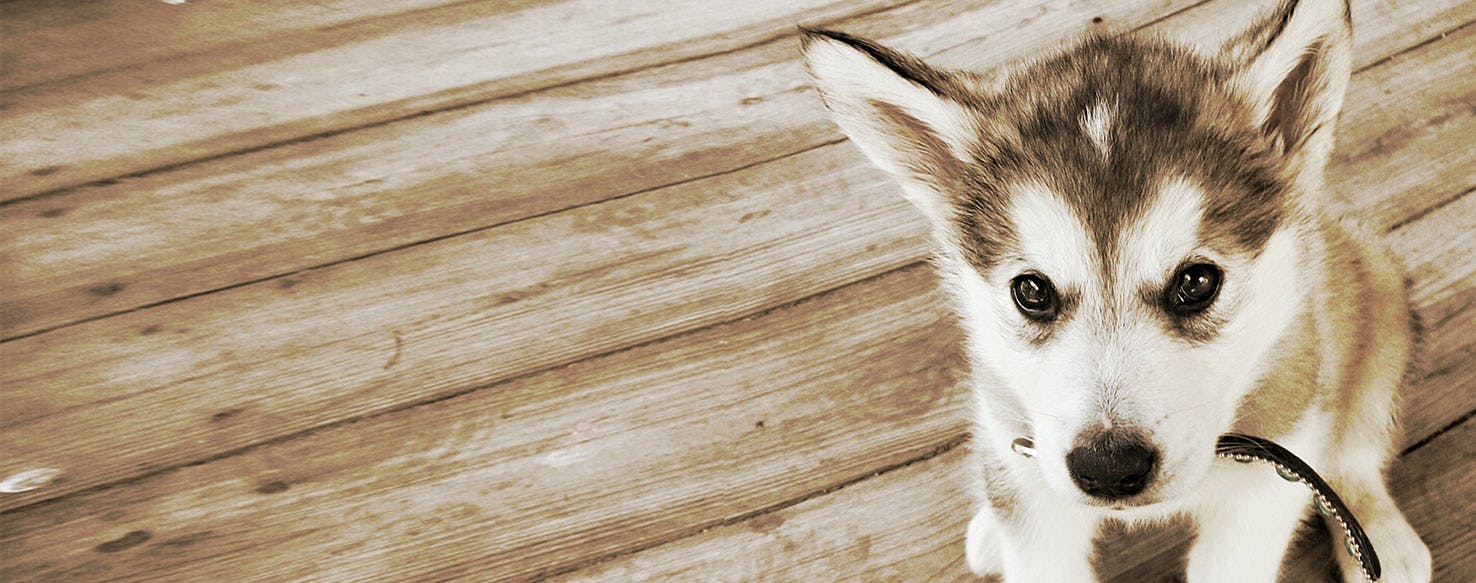- Home
- The Daily Wag!
- Behavior
- Why Do Dogs Make Eye Contact
Why Do Dogs Make Eye Contact

Common
Normal
Introduction
You get home at the end of a long day and sit on your couch. Your dog comes up to you and rests their head on your knee, staring intently into your eyes. Despite the claim that dogs don’t feel emotions the same way that people do, you only have to look into a dog’s eyes to see the truth. A dog’s eyes can express joy, sadness, confusion, hostility, and boundless love.
Dogs use eye-to-eye connections for countless reasons. How do dogs use eye contact, and why? People use eye contact socially to give others attentive listening, but dogs use eye contact differently among each other and with humans. Should you make eye contact with unfamiliar dogs? What do dogs want when they stare at you so fixedly?
The Root of the Behavior
Among humans, less than half of communication is verbal. The rest is body language and expression. We subconsciously interpret another person’s posture, tone, facial expression, and so much more. Dogs, like their wolf cousins, rely on nonverbal communication to establish dominance and social hierarchy. Eye contact is a huge aspect of that nonverbal communication.
Eye contact is an important instinct among dogs. Direct staring is used to establish dominance. When another dog begins a stare-down, the recipient has two courses of action: meet and hold the dominant dog’s gaze, which may elevate the confrontation into a conflict, or avert their gaze, which signals submissiveness.
When first meeting an unfamiliar dog, the same eye contact test is important. To a dominant dog, direct eye contact can be interpreted as a threat. Always keep your eyes on an unfamiliar dog, but try to avoid direct eye contact or staring. A dog will be able to tell the difference. Staring directly into a new dog’s eyes can make a nervous dog hostile or afraid, which can result in the dog lashing out or becoming unpredictable.
Science has recently discovered another reason for eye contact with dogs: bonding. With your pet, eye contact increases a brain chemical called oxytocin, the very same chemical present in parent-child bonding. Scientists speculate that this bonding chemical is at least partly responsible for how dogs became domesticated in the first place.
With your own pet, you, as the human owner, should always be the dominant figure or “pack leader.” A dog who believes they are the master is a dog that will not obey commands, and may even become aggressive. There is a difference between maintaining eye contact or staring, and even your own pet may become uncomfortable or feel threatened. If a dog becomes uncomfortable with the eye contact, they will either turn away or avert their eyes, walk away, or roll over.
Need advice about your pet's health?
Get answers fast from a veterinary professional 24/7 in the Wag! App.
Get Vet ChatEncouraging the Behavior
Using direct eye contact is a great way to get your dog’s attention away from something that they shouldn’t be doing. Training your dog to meet your gaze is important from puppyhood, so that meeting strangers is easier later on. Additionally, if your dog is accustomed to looking at you for attention, approval, or permission, they’re less likely to do something you don’t want, like sneaking food off the table.
You can help promote or encourage your dog to make eye contact by putting a treat near your face, and rewarding them when they meet your eyes. As you progress through other training stages, reward your dog for looking to you for confirmation and approval, as this helps to establish you as the pack leader. Having a dog that is comfortable making eye contact will also make meeting other people easier and less stressful, especially around children, who may stare without realizing it, or others who don’t know how to act around dogs.
If your dog is too confrontational with humans or other dogs, you may need to consult a vet or a professional trainer for advice. Using and maintaining longer durations of eye contact is only recommended if your dog is not aggressive and not fearful. A dog that feels challenged or threatened may be unpredictable, which could result in injury.
Other Solutions and Considerations
As staring can create a confrontation, you should always be aware of your own and your dog’s body language. A dog who glances away, pants, raises a paw, walks away, or rolls over is deferring to your authority and showing submission. If a dog stares back, barks, or displays any other signs of aggression, you should defer to their dominance, and glance away or change your posture.
Some dogs may be too fearful or reluctant to meet your gaze. If you teach your dog that eye contact is positive and can lead to rewards, it will be easier to meet and maintain eye contact in future.
Conclusion
The next time your dog comes up and stares at you lovingly, consider what they might be trying to tell you. More than just dominance or submission, dogs may just want attention, play time, food, or a nice big hit of oxytocin. If the eyes are the windows to the soul, then dogs have beautiful souls.
Written by a Shiba Inu lover Patty Oelze
Veterinary reviewed by:
Published: 02/19/2018, edited: 01/30/2020
More articles by Patty Oelze
